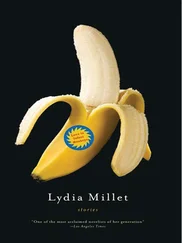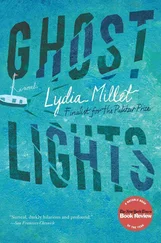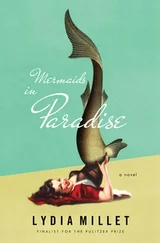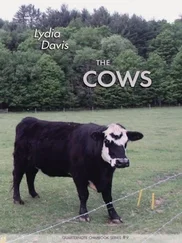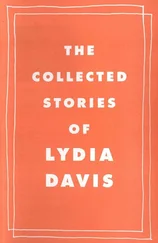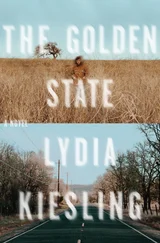“It’s just a regular basement with a lot of closet space,” she told them. “And more skins for taxidermy.”
“Good lord,” said Portia.
“Talk about overkill,” said the gray lady, in a small chirp of a voice.
“I think these might be valuable, though,” said Susan. “I think maybe a university or something might even want them. Maybe they could be donated.”
“Dear, aren’t you late for the meeting with your lawyer friend?” asked Angela — as though Jim didn’t, for all intents and purposes, live in the same house with them. With Angela what was familiar frequently became strange, the near withdrew into the far distance and then came close again. She moved a cube of carrot around with her fork.
Susan had almost forgotten, she realized, after the basement. It was late but she could still go to meet him.
“Thanks for everything,” she told Portia, and took the back stairs up to her bedroom to change her clothes.
In fact she felt cut off and subdued. She couldn’t say anything to the old women, she was not qualified to tell them about the basement’s contents. She was marginal in all this and they were even further away from the matter: they had nothing to do with it. She couldn’t bear to say the wrong thing about it, disturb the truth with a false statement. She didn’t know what the legacy was, if it was important or run-of-the-mill, whether its specimens were real or reconstructed, contraband or legal. For all she knew they had been stolen in the first place. Best to move on, best to close off the subject of the mounts in the rooms beneath to casual discussion and quietly bring in her own natural history expert.
Best to leave out what purported to be the skeleton of a dodo.
When they got back she’d had too much wine — Jim had driven them home — and she collapsed on the bed, useless for sex. He kneeled at the end of the bed and took off her shoes for her, slipped off her skirt and lay down beside her as she pulled the sheet over herself, groaning.
“Ice water?” she asked, pathetically. “Please?”
“Sure,” said Jim, and heaved himself off the bed again. “I’ll brave the geriatrics.”
“Aren’t they asleep?”
“Some of them are nocturnally active.”
He didn’t come back immediately and soon she felt too dizzy lying down. To make her head stop spinning she stood up and went to the bathroom sink, where she splashed water on her face. She found some aspirin in the medicine cabinet and swallowed three tablets with tepid water drunk messily from the tap. She thought of the shaft walled in bricks, the shaft that struck right down into the ground, and now it seemed to be imbued with a mysterious and magnetic attraction. . down into the earth, down below, into the caverns that for years had known no footfalls but her own. She thought of the stainless steel rungs of the ladder, which she had descended with care and with deliberation as though she were an explorer, a miner, a sailor on a submarine. When she descended the rungs of a ladder she had a direct, secret and linear purpose: she would open the doors. She would go down there now and open all the doors.
She expected to run into Jim on the way out of the house, take him with her down into the well. But she cruised through the empty, well-lit kitchen and did not see him, cruised out to the back, clutching her flashlight, stumbling awkwardly over pieces of ground in the dark. Still she often felt she was floating, elevated — no doubt due to the fact that she was so far from sober. Barefoot, she had to pick her way over the flagstones, not wanting to step into the cracks between them, not wanting to feel the hard nubbins of rock on the tender soles of her feet. She had never had the benefit of tough feet, never formed calluses on the balls of her feet or the back edges of the heels or the big toes.
“Never got the tough feet,” she said aloud, sloppy.
At the shaft she told herself to be extra careful, reminded herself she was loaded and this would be a perfect time to break her neck, crumpled and wasted at the bottom of a brick-lined well. She held the flashlight in her teeth — it barely fit, and biting down on it made her jaw ache — and descended with the unevenness of her own heavy breathing filling her ears. She almost lost her footing twice, her bare feet slick on the metal.
Then she was down, through the door, along the hall and into the locker room, where she turned on the light and staggered to the first bank of cabinets.
Open them, she thought, open, open, open.
The first was a gazelle, the second some kind of warthog, then a pygmy hippopotamus. In a bank of smaller boxes there was a bear’s head, a mouse, a bat labeled FLYING FOX. A kind of cat with huge ears — a serval subspecies, according to the sticker — and the head of something cow-like, almost like a longhorn but thinner, labeled HARTEBEEST. Then reptiles: a skink, a tortoise, a big boa. All the stickers had dates on them, all of the species had expired, some as far back as the early nineteenth century. A duck, an owl, a parakeet. Pigeon, starling, dove; coot, petrel, warbler.
Then she was past Africa and into Europe: a Caspian tiger, a Caucasian moose, an elk, an ibex, a lynx, a hare, a dormouse. Two lizards, a raven, a glass tray of insects labeled PERRIN’S CAVE BEETLEand TOBIAS CADDISFLY. Past Europe to Oceania: wallabies from Australia, rats, long-eared bats, one kangaroo. From New Zealand some birds — shorebirds with long, straw-thin legs, a bunch of tiny wrens, a tray of snails, a gecko. Then she was in Asia and the doors opened to a leopard, a pig, a Japanese sea lion, an ostrich. The sea lion she stopped and stared at — its brown hide faded to gold and then back, and its head, much like a seal’s, was graceful with huge black eyes and long black whiskers.
Her head was still spinning and she wished she’d brought more water. Water, water and more water — she needed it — but she couldn’t stand to retreat now. She had to open all the doors. North America next, where there were still a lot of closed cabinets — first the birds, far more of them than she’d known were lost, bright-colored tropicals, macaws and parrots and parakeets. Then reptiles, iguanas and salamanders, frogs and fish — chubs and trout and dace and shiners. The cabinets of small mammals — a shrew, a vole, a fox, a gopher, a pygmy rabbit, a skunk. Then she was throwing open the big doors to a bighorn sheep, a bison, a monk seal, a jaguar. .
She was tired already, she realized. Too many doors. Closed and open. The old man had been far more methodical down here than he had been with the more pedestrian collection in the house above. She stood with her ears ringing, her bare feet cold against the cement floor, her eyes smarting, her thoughts muddled. She was looking back at the door she’d come in through, all the way open against the wall, and saw something protruding from behind it on the wall — a picture frame, it looked like. She crossed the room and closed the door.
It was a framed map of the basement, a floor plan with each bank of cabinets labeled by continent and taxon. South America Mammals or Asia Reptiles , for all of the continents. At the top of the plan were the black words, in old-fashioned type, GLOBAL HOLOCENE EXTINCTIONS. @ 1800–2000. At the bottom, THE LEGACY COLLECTION. A PROJECT OF HUNTERS CLUB INTERNATIONAL.But it wasn’t 2000 yet, she thought ploddingly. He had been looking forward to his completion date, but then had died before he could finish.
Upstairs was also a map somewhat like this; she had tried in vain to impose a neat order on the collection. . the story of the auks, she thought. Of how the skins were acquired. . the question of whether they were murdered for the sake of their own history, murdered in order to become mementos of themselves.
Читать дальше


